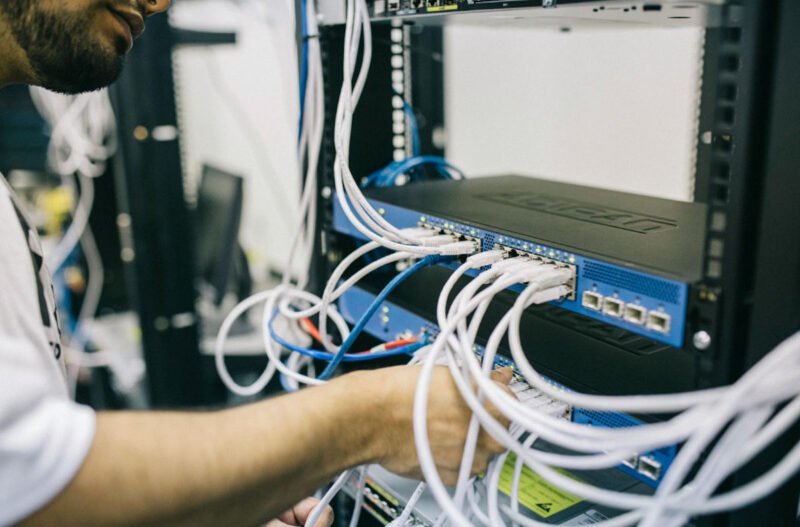You don’t notice infrastructure when it’s working.
Only when it fails—the page that won’t load, the payment that times out, the app that freezes at checkout—does it suddenly matter.
That’s the hidden side of customer service.
It’s not just about friendly staff or clean design anymore. In 2025, digital reliability is what shapes brand loyalty.
PwC found that 32% of customers will stop doing business with a brand they once loved after just one bad experience. And these days, “bad experience” usually means downtime.
Reliability has quietly become the new service standard – and most businesses are still catching up.
The Hidden Side of Experience
When people talk about customer experience, they mean logos, language, and maybe delivery times. But they rarely mention uptime. Yet that’s the foundation holding everything together.
Every click, payment, and live chat runs on data infrastructure in the background, and that background is where most people succeed or fail.
And it’s the layers that quietly do their job – power systems, cooling redundant networks, physical security. The kind of stuff no one talks about in meetings but everyone blames when it fails.
Research from Uptime Institute shows that over 60% of outages cost businesses more than $1,000,000, and 15% now exceed $1 million in losses.
But performance matters here too. Google’s Web Vitals study found that sites loading within 2.4 seconds get higher conversion rates and longer visits than those taking longer to load.
This proves that when your platform lags, customers don’t think “server congestion”; they just leave. And that will hit you were it hurts – in the profit margins.
That’s the hidden side of the customer experience, not the logo or tone of voice, but the unforeseen infrastructure that keeps everything running smoothly.
Downtime is Reputation Damage
Most outages are brief, but even short ones hit hard. The LogicMonitors Outage Impact Report found that 96% of IT leaders experienced at least one outage in the last three years, and roughly half said that downtime directly affects brand reputation.
It’s easy to dismiss that as “IT issues”, but when a site stalls or a service crashes, people don’t blame the technology; they blame the brand. They think unreliable, and that’s why brands now need to, and increasingly are, viewing uptime as a reputation metric, not just a technical one. Reliability isn’t a background feature anymore; it’s a part of the story customers buy into.
This is where those silent systems makes your business look trustworthy before a customer ever speaks to you.
Infrastructure as Brand Trust
Behind every smooth digital experience sits something physical—power grids, cooling systems, network cables, racks of servers, and the teams that hold it all together. Its quite literally holding your brand’s reputation. It’s not glamorous, but it is what keeps the promises your marketing makes.
Modern data centres are essential to that marketing story, and they’re designed for resilience through redundant power, energy-efficient cooling, multiple fibre routes, and layered security. Data center build these environments to guarantee uptime, which lets companies operate without fear of a sudden outage undoing their work.
It’s not about promoting hardware. It’s about stability.
When your systems never fail, customers subconsciously learn to trust you. Trust is a marketing advantage no campaign can buy.
Building Digital Resilience
Reliability doesn’t happen by accident; it’s engineered.
Businesses that recover quickly from disruption plan for it long before anything breaks.
A McKinsey Digital case study found that one global enterprise improved incident-related resolution times by nearly 40% after investing in targeted resilience testing and infrastructure redesign.
Some fundamentals worth building in include
- Redundancy mapping – identify single points of failure and duplicate them.
- Load testing – stress systems before your busiest season, not during it.
- Data replication – store back-ups in multiple zones or regions.
- Communication protocols – keep staff and customers informed when issues arise.
Preparedness doesn’t eliminate risk, but it stops a hiccup from becoming a headline.
The Energy Factor
Sustainability now sits at the heart of reliable and energy-hungry systems, which are both costly and vulnerable.
The International Energy Agency estimates that global data centres consume around 1.5% of total global energy usage, and this number is set to increase by 2030.
For businesses, energy efficiency is no longer just a climate concern – it’s operational insurance. Facilities with lower power usage effectiveness scores waste less energy, generate less heat, and stay more stable during surges to the grid. A PUE of 1.1 or below is the benchmark of serious performance engineering.
Ask your providers for those numbers, and if they can’t give them, the energy efficiency is a problem.
Turning Reliability into a Competitive Edge
Customers will rarely notice when things are going well, but as soon as they aren’t, you will know about it. And this is why reliability can be your differentiator.
According to the fourth edition of the Salesforce State of the Connected Customer Report from 2022, 88% of consumers said the experience a company provides is as important as its product or service. This experience now extends to the digital basics – site performance, checkout stability and whether customers face an error screen.
The Human Side of Uptime
Relatability might sound mechanical, but it creates a sense of emotional safety. When your systems work, your customers relax. They stop thinking about whether they can rely on you and start assuming they can.
That assumption is priceless. In a noisy market, it is this confidence that keeps people from clicking away. And it’s built quietly through systems discipline and attention long before anyone sees the result.
In the End
In the end, infrastructure isn’t glamorous, but it’s the heartbeat of your reputation,
Downtime lag or failure doesn’t just cost you money – it chips away at trust. The businesses that endure are the ones that treat reliability not as a technical metric but as part of brand identity. In reality, customers don’t see the systems behind your servers; they just see whether or not you keep your promise.









